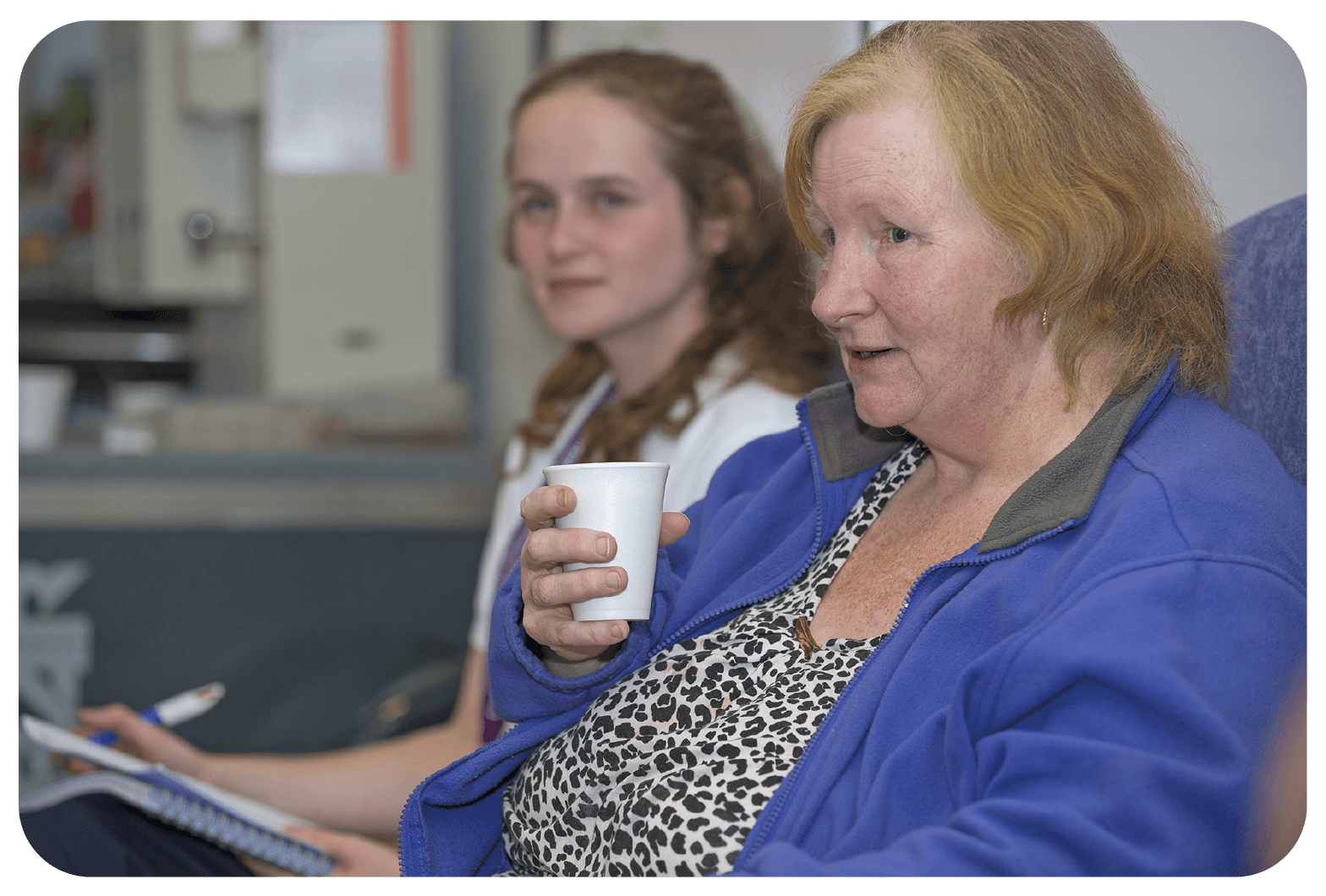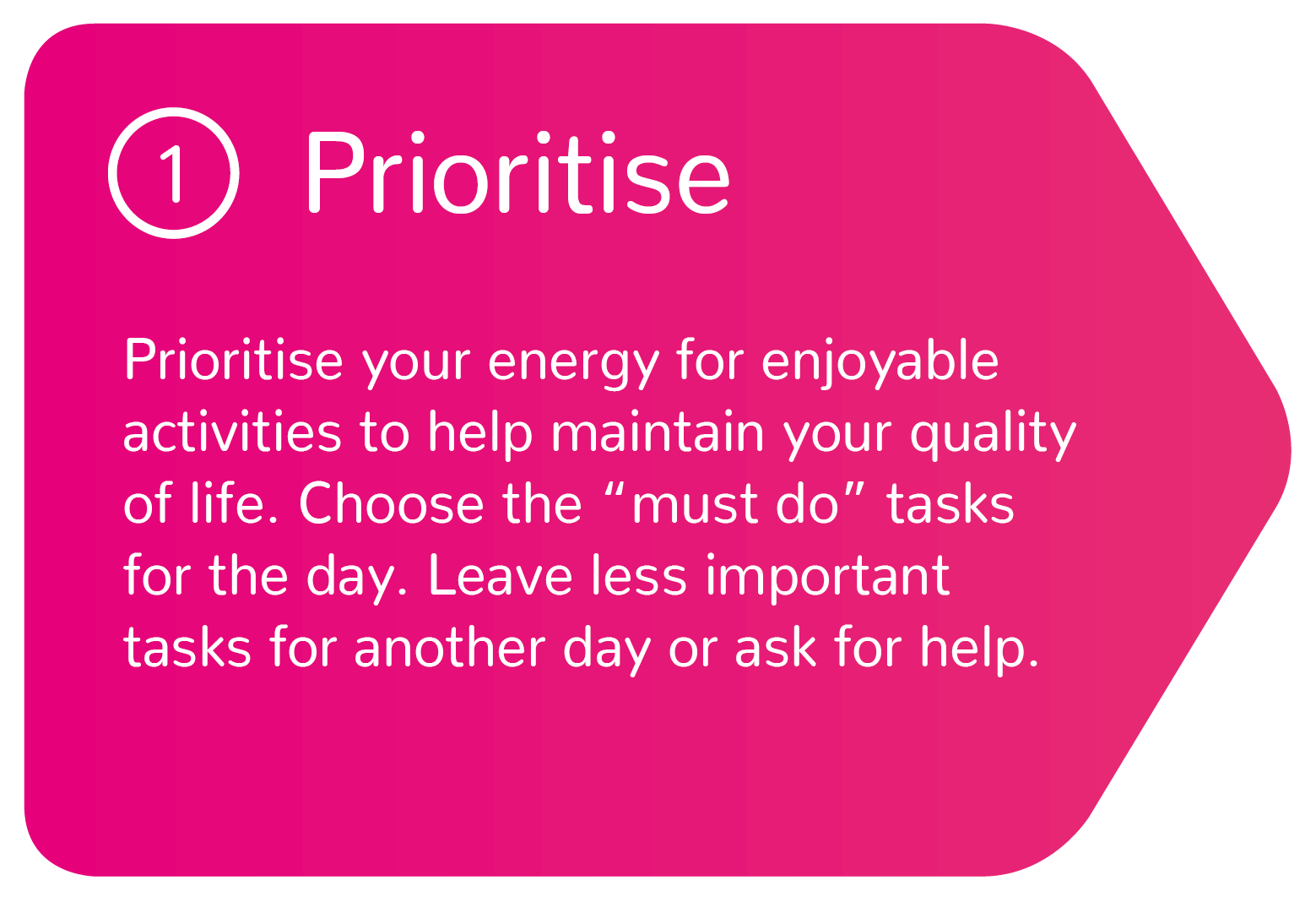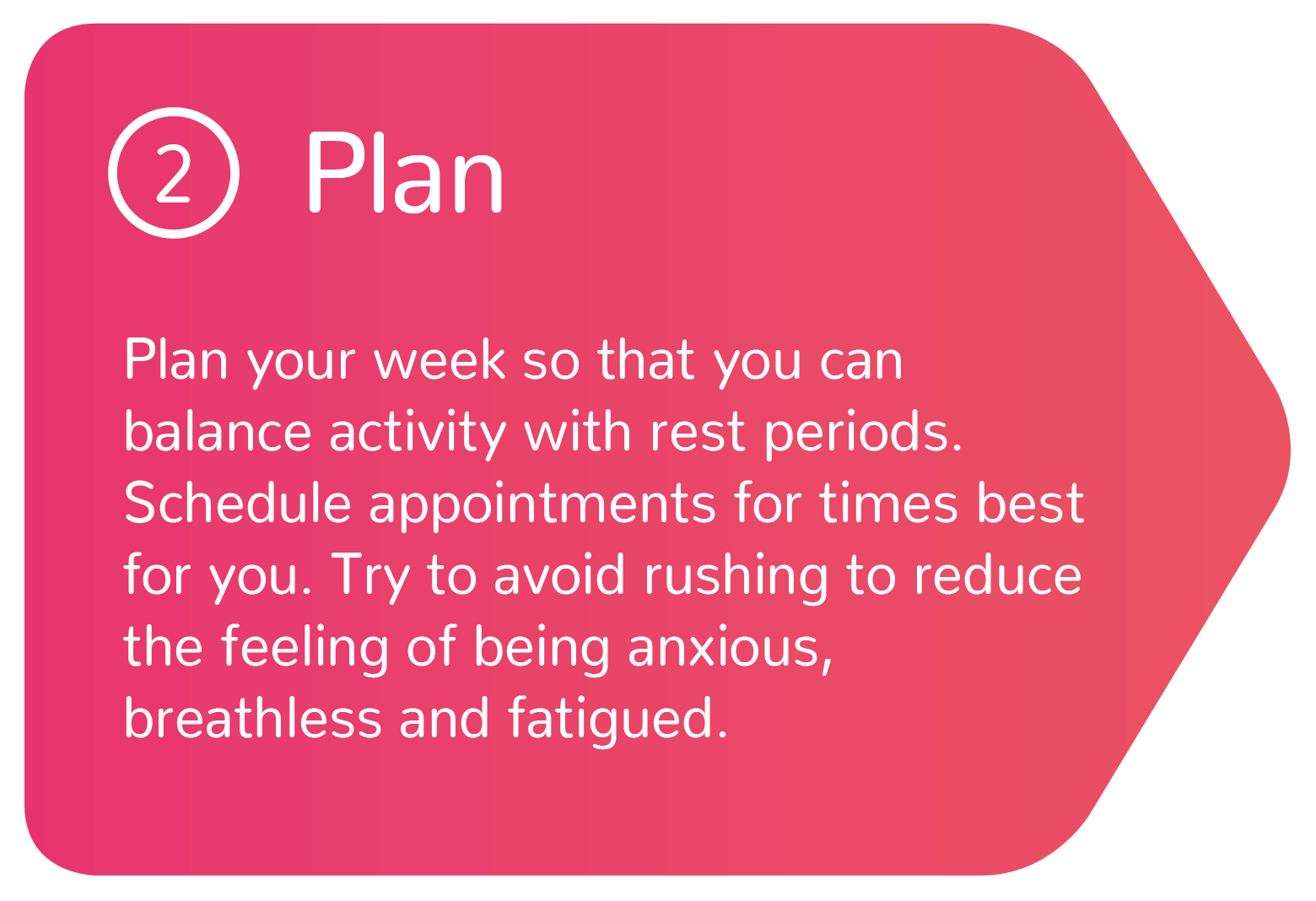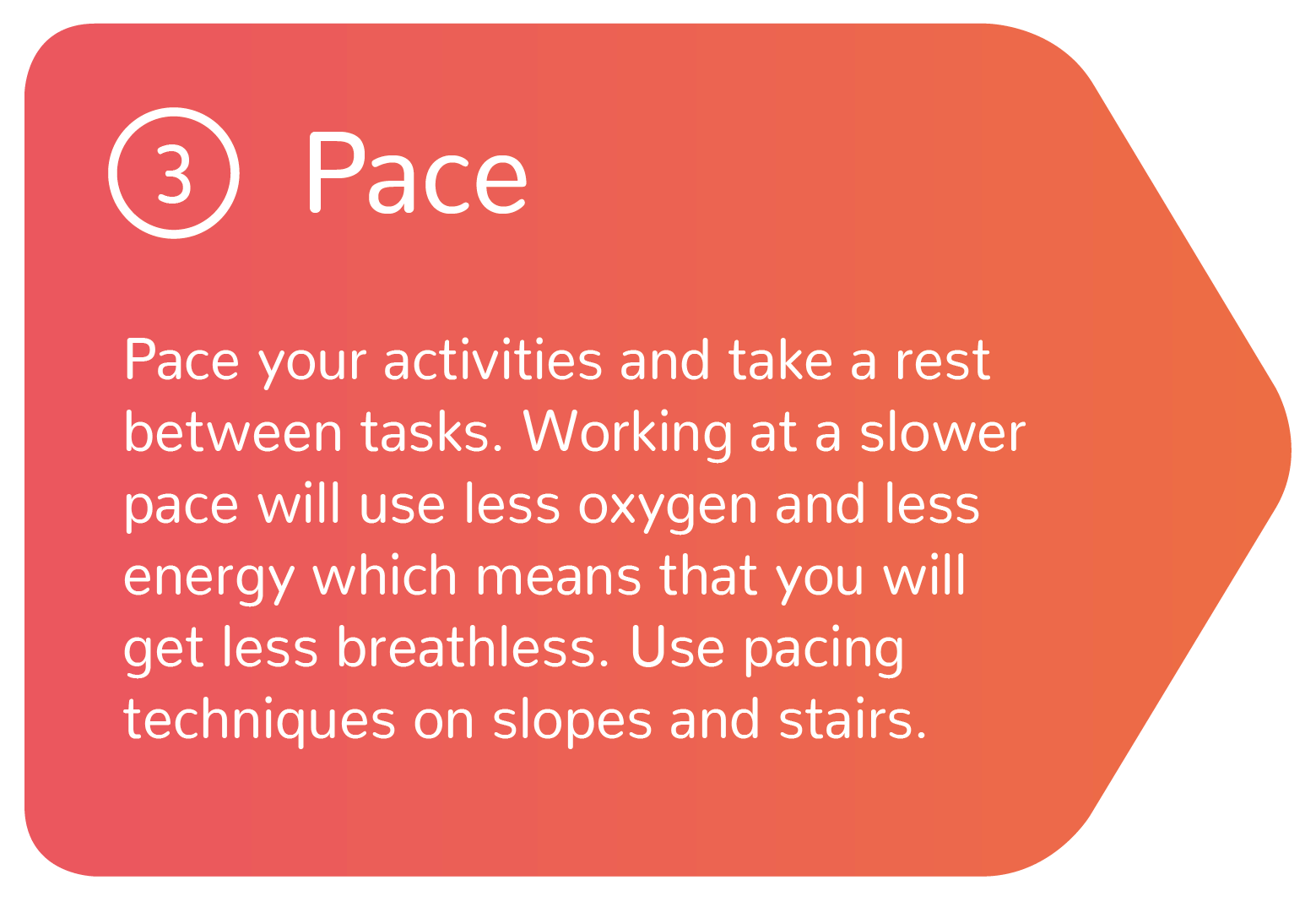Managing Breathlessness
Breathlessness is a normal response to physical activity because our muscles need more oxygen when they are moving. The heart and lungs work harder to supply enough oxygen to meet the demand of the working muscles. How much oxygen your body needs (oxygen demand) depends on what you are doing.
People with lung conditions can become more breathless at very low levels of exertion which can be uncomfortable and sometimes frightening. Attending the Breathe programme will equip you with different ways to manage breathlessness.
Advice if you can’t catch your breath
Positions of ease
The positions shown below may help to ease your breathlessness or help you feel more comfortable. For more information about which positions may help you, please speak to the Breathe team.
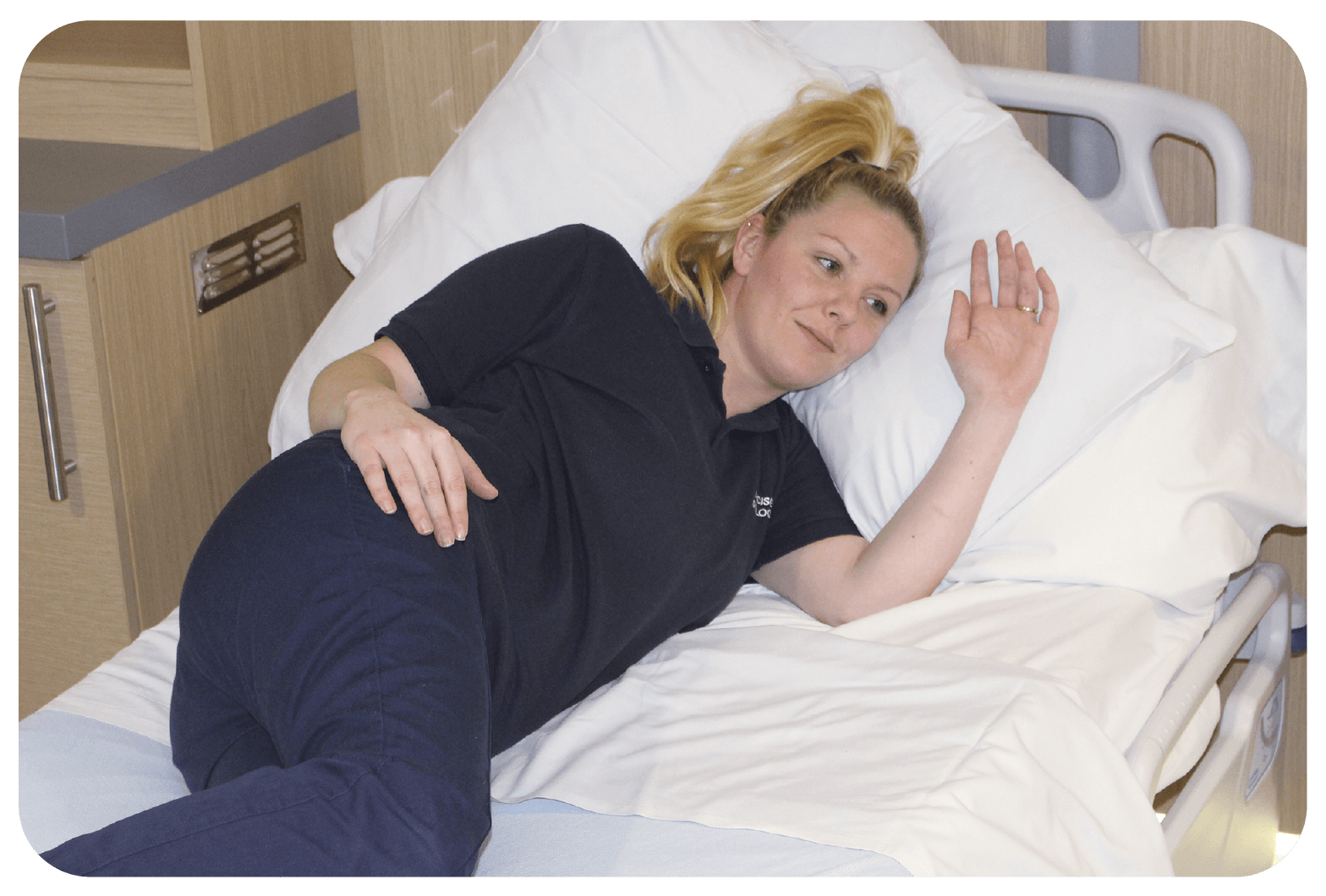
1. High Side Lying
Make sure that your head and chest are supported and bend your top leg up. Then put your lower arm under the pillow.
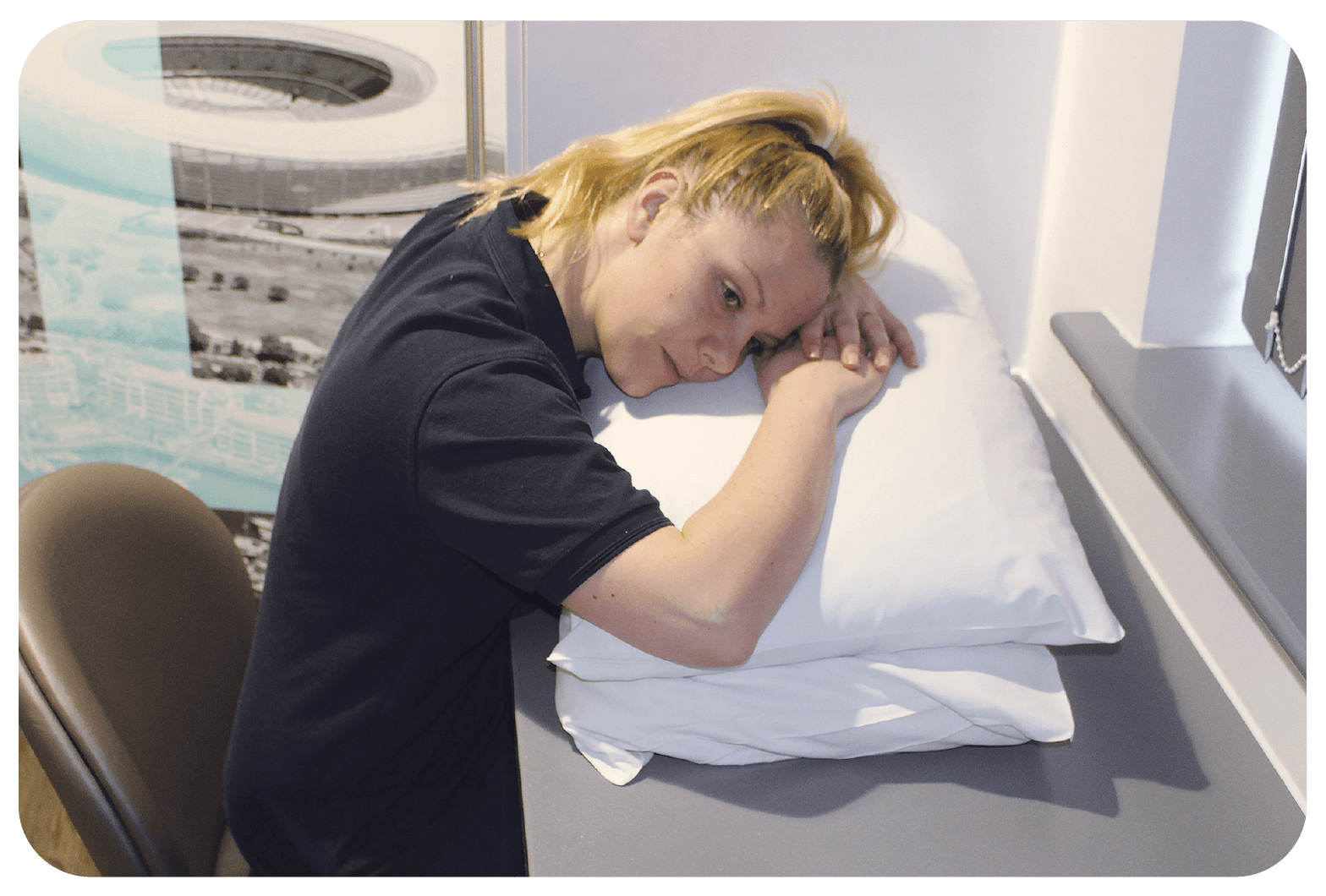
2. Forward Lean Sitting
Pile several pillows on a table and relax your head onto them, then relax your arms on the table. Do not try this position if you have neck problems or are uncomfortable with things near your face.
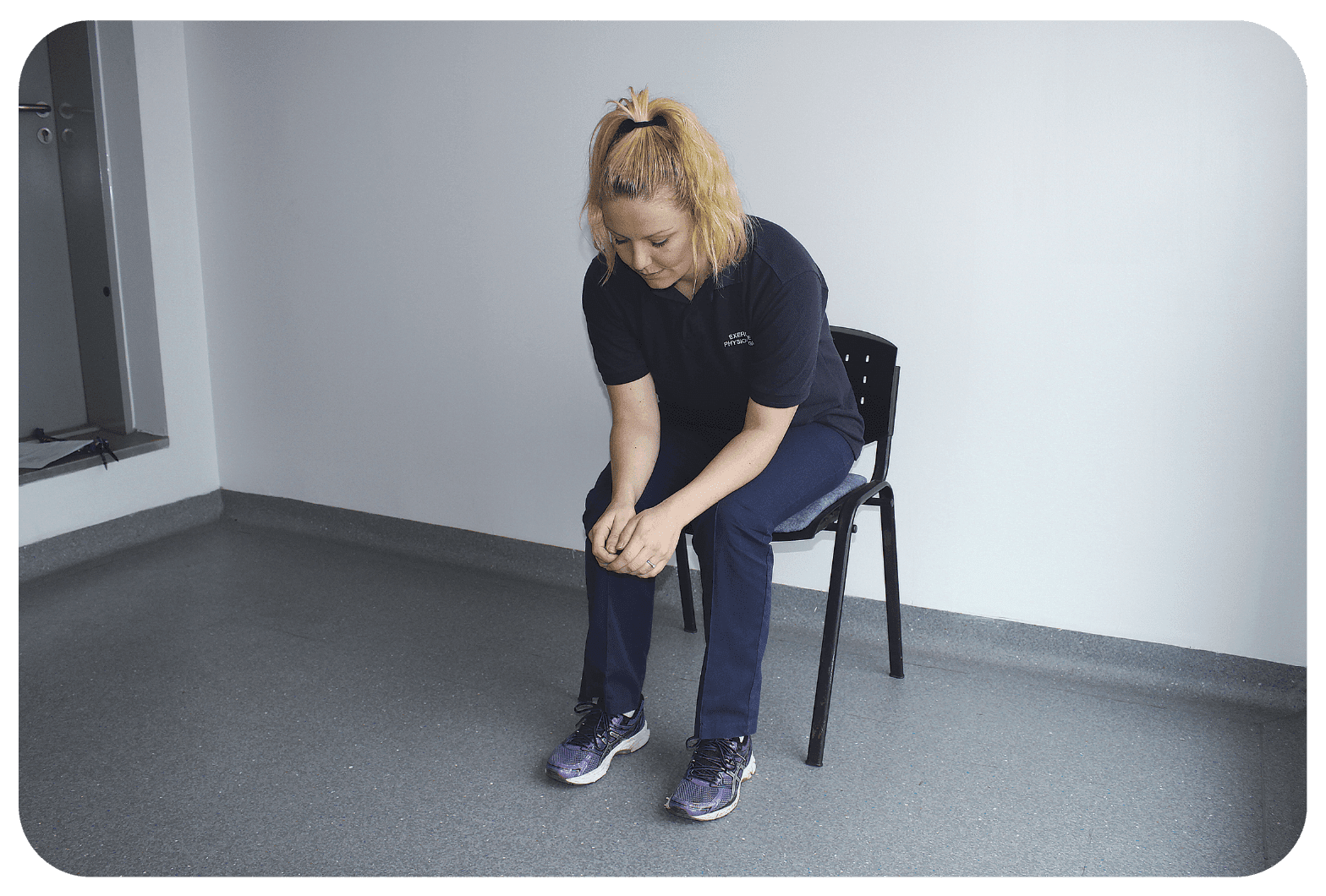
3. Relaxed Sitting Position
Sit on a chair and rest your elbows onto your thighs, then relax your hands and wrists.
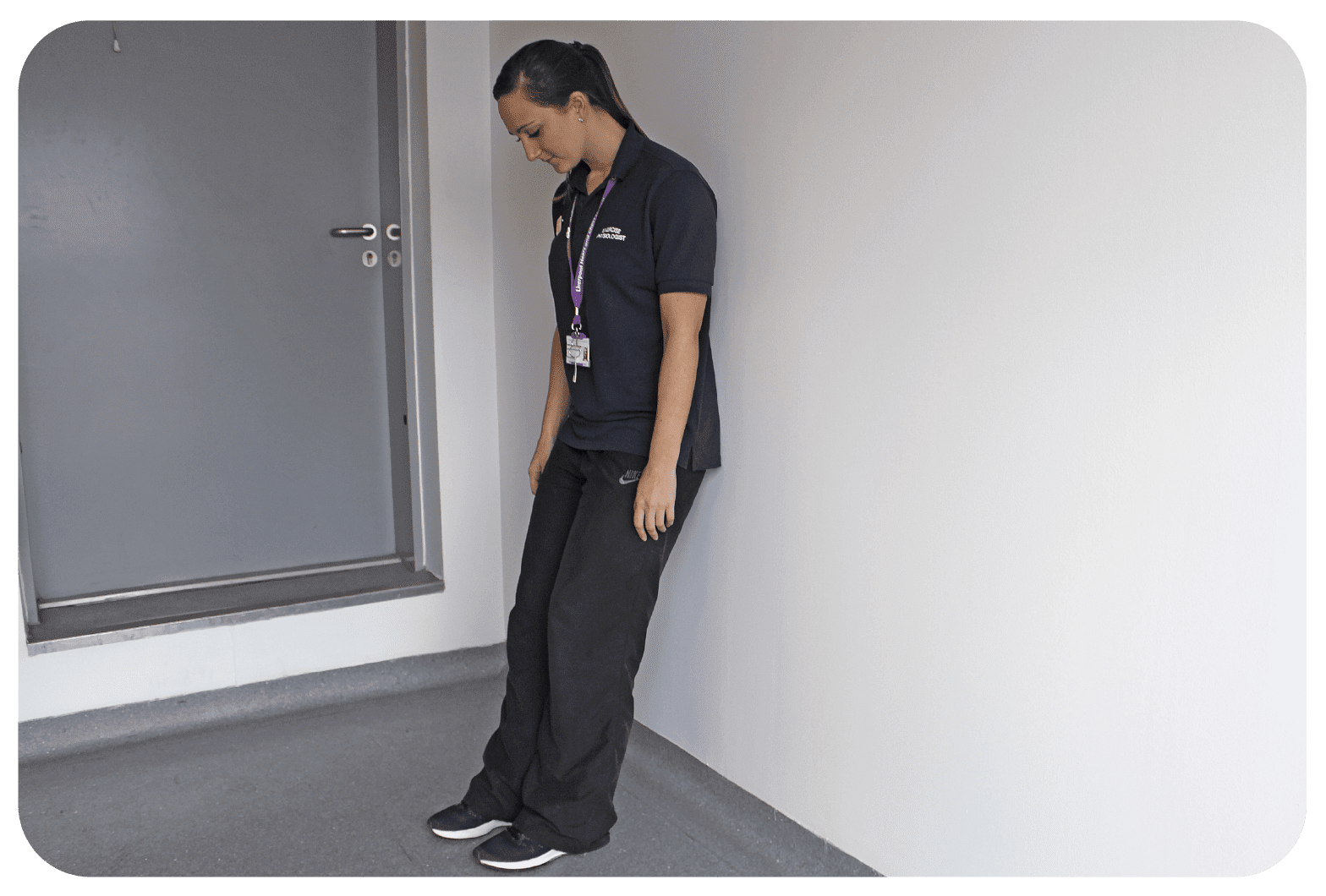
4. Relaxed Standing
Lean against a wall and relax your shoulders, arms and neck.
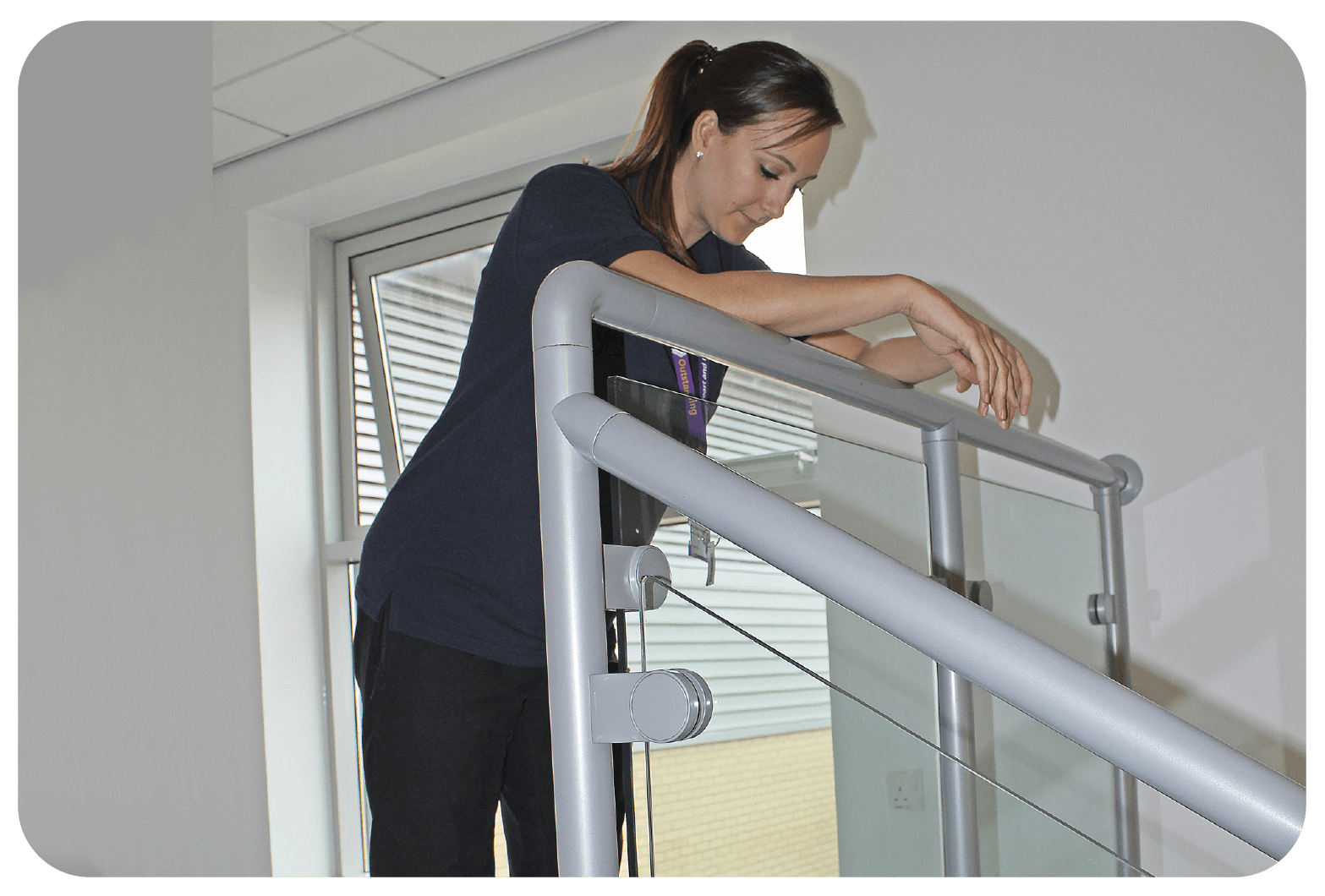
5. Forward Lean Standing
Lean against a banister, fence of wall but keep a comfortable distance and relax your hands, wrists and neck.
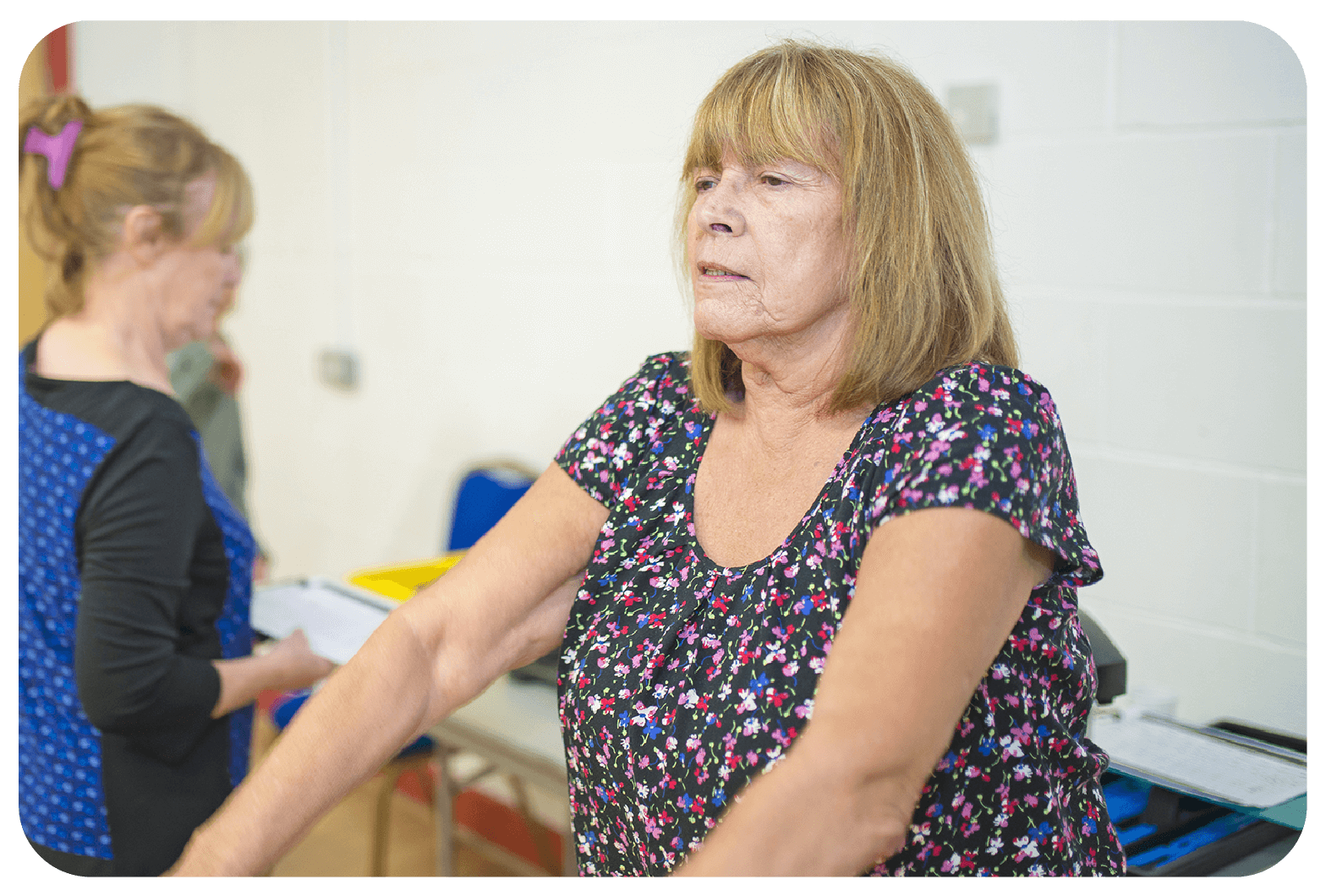
Breathing Techniques
There are many ways to control your breathing and the Breathe Team will help you find the technique that works best for you. Here are some techniques to try:
relaxed slow deep breathing: breathe in gently through your nose and breathe out through your nose and mouth.
pursed-lip breathing: breathe in gently through your nose and breathe out with your lips pursed as if you are whistling.
blow as you go: use this when you’re doing something that makes you breathless. Breathe in before you make the effort, then breathe out while making the effort.
paced breathing: this is useful when you’re active. Pace your breathing to your steps, for example breathe in as you take two steps then breathe out as you take the next two steps.
The Breathe Team will also teach you techniques for clearing phlegm from your chest.
Advice on Chest Clearance
Conserving your Energy
Energy conservation is saving your energy. It means finding the easiest way of doing everyday tasks.
It is important to remember that conserving energy is not about avoiding exercise. Energy conservation is about making everyday tasks easier so you will have some energy left for exercise. The following tips will help you to save energy and can be used for any activity or task:
• Plan ahead
• Prioritise tasks
• Pace yourself
• Use breathing exercises
• Sit during tasks and activities
• Minimise arm movements
• Avoid doing too much on one day
• Use good posture
